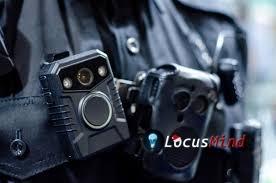Enhancing Transparency and Accountability with Body-Worn Cameras
Introduction to Body-Worn Cameras
Body-worn cameras (BWCs) are compact video recording devices worn on the body, typically by law enforcement officers and security personnel. These devices capture real-time audio and visual data from the officer’s perspective, providing a transparent account of interactions between authorities and the public. Over the past decade, the adoption of BWCs has grown globally due to increasing demands for police accountability and public safety.
Purpose and Functionality
The primary purpose of body-worn cameras is to document events as they unfold, offering an unbiased video record. BWCs are designed to be lightweight, durable, and easy to use. Most models feature wide-angle lenses, HD video capabilities, night vision, and secure data storage. Some advanced versions also include GPS tracking and real-time streaming, enabling remote supervision. These capabilities make BWCs vital tools in improving behavior during encounters, de-escalating potential conflicts, and collecting evidence for investigations and court proceedings.
Benefits in Law Enforcement and Beyond
One of the key advantages of body-worn cameras is their potential to build trust between the public and law enforcement. When officers wear cameras, both parties tend to conduct themselves more professionally, reducing complaints and incidents of misconduct. Studies have shown that BWCs contribute to a measurable decrease in use-of-force incidents and false accusations. In addition to police forces, body-worn cameras are increasingly used in private security, healthcare, firefighting, and transportation sectors, where safety and accountability are equally critical.
Challenges and Concerns
Despite their benefits, body-worn cameras also raise important concerns regarding privacy, data management, and ethical use. Recording sensitive interactions, such as those involving minors, victims of abuse, or individuals in medical distress, can pose ethical dilemmas. Furthermore, managing and storing large volumes of footage requires secure and scalable data solutions, often involving cloud storage or encrypted servers. Clear policies on when to activate or deactivate cameras, access control, and retention timelines are essential to ensure proper and lawful use.
Legal and Policy Frameworks
The effectiveness of body-worn cameras is heavily influenced by the regulatory frameworks governing their use. Different regions and countries have varying policies related to recording, consent, data storage, and public access. Establishing standardized guidelines helps prevent misuse and protects both the rights of officers and the public. As technology advances, legal standards must evolve accordingly to balance transparency with individual privacy.
Future of Body-Worn Cameras
The future of BWCs is likely to involve deeper integration with artificial intelligence and data analytics. Emerging innovations include facial recognition, automatic redaction of sensitive content, and real-time alert systems for dangerous encounters. As body-worn cameras become more sophisticated, their role will expand beyond law enforcement into broader applications in urban management, retail security, and emergency services.
Source - https://www.marketresearchfuture.com/reports/body-worn-camera-market-2972
Body-worn cameras are transforming how public and private organizations ensure accountability, transparency, and safety. While they offer numerous advantages, careful consideration of ethical and legal implications is essential. With evolving technologies and proper governance, BWCs can continue to serve as powerful tools for building trust and improving public service operations.
Introduction to Body-Worn Cameras
Body-worn cameras (BWCs) are compact video recording devices worn on the body, typically by law enforcement officers and security personnel. These devices capture real-time audio and visual data from the officer’s perspective, providing a transparent account of interactions between authorities and the public. Over the past decade, the adoption of BWCs has grown globally due to increasing demands for police accountability and public safety.
Purpose and Functionality
The primary purpose of body-worn cameras is to document events as they unfold, offering an unbiased video record. BWCs are designed to be lightweight, durable, and easy to use. Most models feature wide-angle lenses, HD video capabilities, night vision, and secure data storage. Some advanced versions also include GPS tracking and real-time streaming, enabling remote supervision. These capabilities make BWCs vital tools in improving behavior during encounters, de-escalating potential conflicts, and collecting evidence for investigations and court proceedings.
Benefits in Law Enforcement and Beyond
One of the key advantages of body-worn cameras is their potential to build trust between the public and law enforcement. When officers wear cameras, both parties tend to conduct themselves more professionally, reducing complaints and incidents of misconduct. Studies have shown that BWCs contribute to a measurable decrease in use-of-force incidents and false accusations. In addition to police forces, body-worn cameras are increasingly used in private security, healthcare, firefighting, and transportation sectors, where safety and accountability are equally critical.
Challenges and Concerns
Despite their benefits, body-worn cameras also raise important concerns regarding privacy, data management, and ethical use. Recording sensitive interactions, such as those involving minors, victims of abuse, or individuals in medical distress, can pose ethical dilemmas. Furthermore, managing and storing large volumes of footage requires secure and scalable data solutions, often involving cloud storage or encrypted servers. Clear policies on when to activate or deactivate cameras, access control, and retention timelines are essential to ensure proper and lawful use.
Legal and Policy Frameworks
The effectiveness of body-worn cameras is heavily influenced by the regulatory frameworks governing their use. Different regions and countries have varying policies related to recording, consent, data storage, and public access. Establishing standardized guidelines helps prevent misuse and protects both the rights of officers and the public. As technology advances, legal standards must evolve accordingly to balance transparency with individual privacy.
Future of Body-Worn Cameras
The future of BWCs is likely to involve deeper integration with artificial intelligence and data analytics. Emerging innovations include facial recognition, automatic redaction of sensitive content, and real-time alert systems for dangerous encounters. As body-worn cameras become more sophisticated, their role will expand beyond law enforcement into broader applications in urban management, retail security, and emergency services.
Source - https://www.marketresearchfuture.com/reports/body-worn-camera-market-2972
Body-worn cameras are transforming how public and private organizations ensure accountability, transparency, and safety. While they offer numerous advantages, careful consideration of ethical and legal implications is essential. With evolving technologies and proper governance, BWCs can continue to serve as powerful tools for building trust and improving public service operations.
Enhancing Transparency and Accountability with Body-Worn Cameras
Introduction to Body-Worn Cameras
Body-worn cameras (BWCs) are compact video recording devices worn on the body, typically by law enforcement officers and security personnel. These devices capture real-time audio and visual data from the officer’s perspective, providing a transparent account of interactions between authorities and the public. Over the past decade, the adoption of BWCs has grown globally due to increasing demands for police accountability and public safety.
Purpose and Functionality
The primary purpose of body-worn cameras is to document events as they unfold, offering an unbiased video record. BWCs are designed to be lightweight, durable, and easy to use. Most models feature wide-angle lenses, HD video capabilities, night vision, and secure data storage. Some advanced versions also include GPS tracking and real-time streaming, enabling remote supervision. These capabilities make BWCs vital tools in improving behavior during encounters, de-escalating potential conflicts, and collecting evidence for investigations and court proceedings.
Benefits in Law Enforcement and Beyond
One of the key advantages of body-worn cameras is their potential to build trust between the public and law enforcement. When officers wear cameras, both parties tend to conduct themselves more professionally, reducing complaints and incidents of misconduct. Studies have shown that BWCs contribute to a measurable decrease in use-of-force incidents and false accusations. In addition to police forces, body-worn cameras are increasingly used in private security, healthcare, firefighting, and transportation sectors, where safety and accountability are equally critical.
Challenges and Concerns
Despite their benefits, body-worn cameras also raise important concerns regarding privacy, data management, and ethical use. Recording sensitive interactions, such as those involving minors, victims of abuse, or individuals in medical distress, can pose ethical dilemmas. Furthermore, managing and storing large volumes of footage requires secure and scalable data solutions, often involving cloud storage or encrypted servers. Clear policies on when to activate or deactivate cameras, access control, and retention timelines are essential to ensure proper and lawful use.
Legal and Policy Frameworks
The effectiveness of body-worn cameras is heavily influenced by the regulatory frameworks governing their use. Different regions and countries have varying policies related to recording, consent, data storage, and public access. Establishing standardized guidelines helps prevent misuse and protects both the rights of officers and the public. As technology advances, legal standards must evolve accordingly to balance transparency with individual privacy.
Future of Body-Worn Cameras
The future of BWCs is likely to involve deeper integration with artificial intelligence and data analytics. Emerging innovations include facial recognition, automatic redaction of sensitive content, and real-time alert systems for dangerous encounters. As body-worn cameras become more sophisticated, their role will expand beyond law enforcement into broader applications in urban management, retail security, and emergency services.
Source - https://www.marketresearchfuture.com/reports/body-worn-camera-market-2972
Body-worn cameras are transforming how public and private organizations ensure accountability, transparency, and safety. While they offer numerous advantages, careful consideration of ethical and legal implications is essential. With evolving technologies and proper governance, BWCs can continue to serve as powerful tools for building trust and improving public service operations.
·61 Wyświetlenia
·0 Oceny


